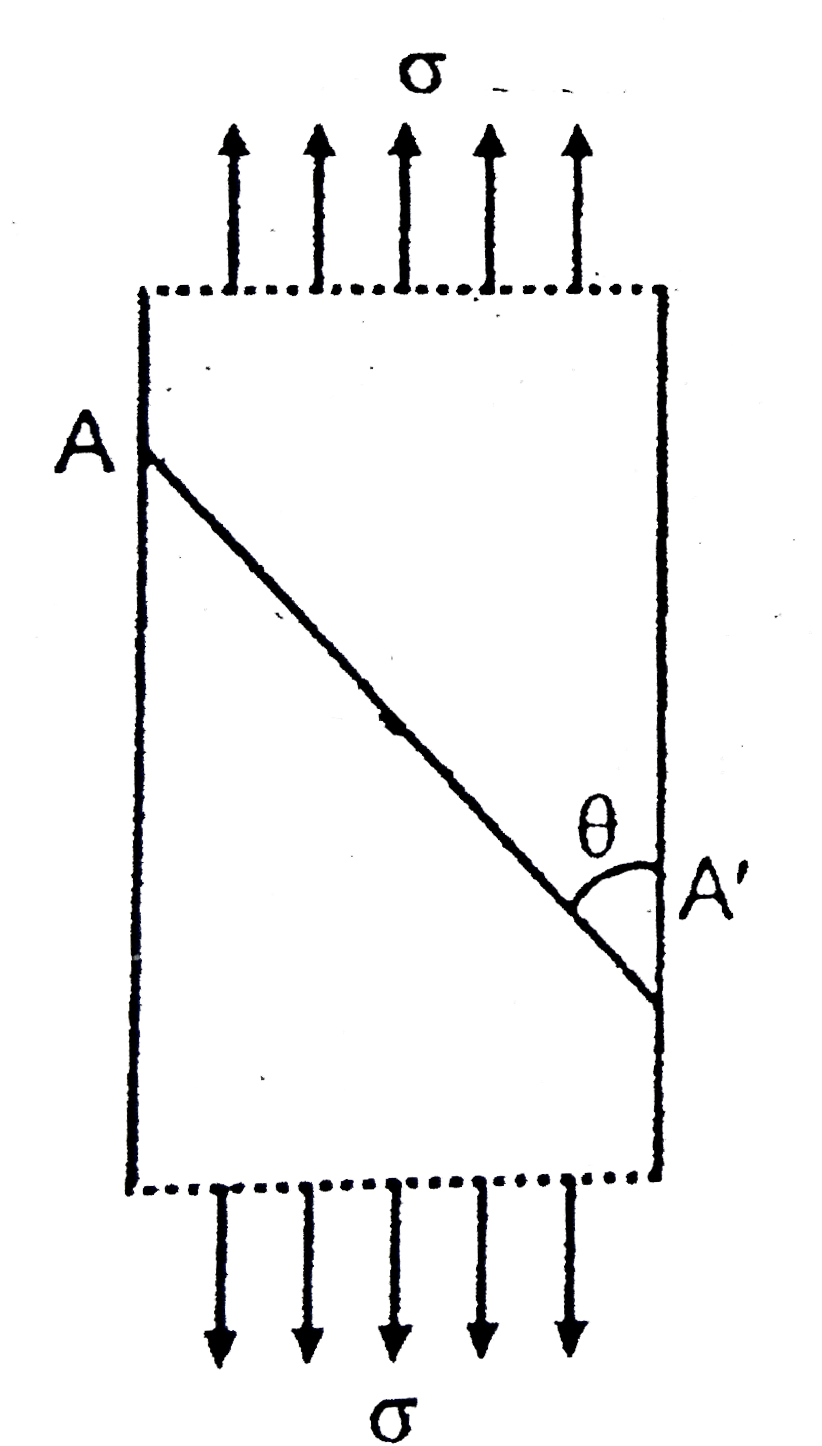Stress and pressure are both forces per unit area. T in what respect does stress differ from Pressure?
To understand the difference between stress and pressure, we can break it down into a step-by-step explanation:
1. Definition of Pressure:
- Pressure is defined as the external force applied per unit area. It acts uniformly on the surface of an object and is always compressive in nature.
- Mathematically, pressure P can be expressed as:
P=FA
where F is the external force applied and A is the area over which the force is applied.
2. Definition of Stress:
- Stress, on the other hand, is defined as the internal force per unit area that resists deformation within a material. It arises from the material's response to external forces.
- Stress can be expressed mathematically as:
σ=FinternalA
where Finternal is the internal force resisting deformation and A is the area over which the internal force acts.
3. Nature of Forces:
- Pressure is always compressive, meaning it only acts to compress or push inward on a material.
- Stress can be of three types:
- Compressive Stress: Similar to pressure, it acts to compress the material.
- Tensile Stress: Acts to stretch or pull the material apart.
- Shear Stress: Acts parallel to the surface of the material, causing layers to slide past each other.
4. Application Context:
- Pressure is typically used in contexts involving fluids (liquids and gases) where the force is applied uniformly in all directions.
- Stress is used in solid mechanics to describe how materials deform under various loading conditions.
5. Conclusion:
- In summary, while both stress and pressure are forces per unit area, they differ in their nature and application. Pressure is an external, always compressive force, while stress can be internal and can manifest as compressive, tensile, or shear forces.
- Pressure is defined as the external force applied per unit area. It acts uniformly on the surface of an object and is always compressive in nature.
- Mathematically, pressure P can be expressed as:
P=FA
where F is the external force applied and A is the area over which the force is applied.
- Stress, on the other hand, is defined as the internal force per unit area that resists deformation within a material. It arises from the material's response to external forces.
- Stress can be expressed mathematically as:
σ=FinternalA
where Finternal is the internal force resisting deformation and A is the area over which the internal force acts.
- Pressure is always compressive, meaning it only acts to compress or push inward on a material.
- Stress can be of three types:
- Compressive Stress: Similar to pressure, it acts to compress the material.
- Tensile Stress: Acts to stretch or pull the material apart.
- Shear Stress: Acts parallel to the surface of the material, causing layers to slide past each other.
- Pressure is typically used in contexts involving fluids (liquids and gases) where the force is applied uniformly in all directions.
- Stress is used in solid mechanics to describe how materials deform under various loading conditions.
- In summary, while both stress and pressure are forces per unit area, they differ in their nature and application. Pressure is an external, always compressive force, while stress can be internal and can manifest as compressive, tensile, or shear forces.
Topper's Solved these Questions
- PROPERTIES OF SOLIDS AND FLUIDSBOOK - CENGAGE PHYSICS ENGLISHCHAPTER - PROPERTIES OF SOLIDS AND FLUIDSEXERCISE - Exercise 5.2
6 Videos
- PROPERTIES OF SOLIDS AND FLUIDSBOOK - CENGAGE PHYSICS ENGLISHCHAPTER - PROPERTIES OF SOLIDS AND FLUIDSEXERCISE - Exercise 5.3
9 Videos
- PROPERTIES OF SOLIDS AND FLUIDSBOOK - CENGAGE PHYSICS ENGLISHCHAPTER - PROPERTIES OF SOLIDS AND FLUIDSEXERCISE - Solved Examples
11 Videos
- NEWTON'S LAWS OF MOTION 2BOOK - CENGAGE PHYSICS ENGLISHCHAPTER - NEWTON'S LAWS OF MOTION 2EXERCISE - Integer type
1 Videos
- RIGID BODY DYNAMICS 1BOOK - CENGAGE PHYSICS ENGLISHCHAPTER - RIGID BODY DYNAMICS 1EXERCISE - Integer
11 Videos
Similar Questions
Knowledge Check
Assuming that shear stress at the base of a mountain is equal to the force per unit area due to its weight. Calculate the maximum possible height of a mountain on the earth if breaking stress of a typical rock is 3×108Nm−3 and its density 3×10−3kgm−3. (Take g=10ms−2)
A4 KmB8 KmC10 KmD16 KmAssertion : Stress is the internal force per unit area of a body.
Reason : Rubber is less elastic than steel.ABoth assertion and reason are true and the reason is the correct explanation of the assertionBBoth assertion and reason are true but the reason is not the correct explanation of the assertionCThe assertion is true but the reason is falseDThe assertion and reason both are false
Thrust per unit area is called pressure.
View SolutionIn what respect does boric acid differ from other protonic acids ?
View SolutionWhat is meant by pressure ? State its S.I. unit.
View SolutionA rectangular bar is uniformly loaded axially with force per unit area σ shown. Shown is a section AA' in the bar. Normal stress for the section is

View SolutionWhat is the S.I unit of pressure?
View SolutionPressure is determined as force per unit area of the surface. The SI unit of pressure, pascal is as shown below:
1Pa=Nm−2
If the mass of air at sea level is 1034gcm−2, calculate the pressure in pascal.
View Solution
